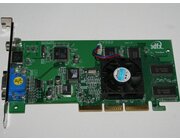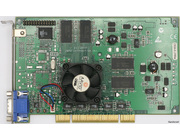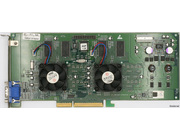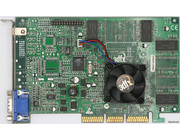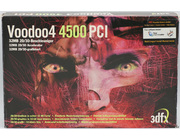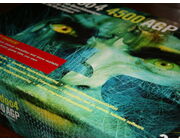The last generation of production Voodoo cards before 3dfx became bankrupt. The VSA-100 found it's way on the Voodoo 4 4500 and the Voodoo 5 5500. On the latter two VSA-100 were used in SLI (Scan Line Interleave) to improve performance, fully compliant to it's name, VSA or Voodoo Scalable Architecture.
VSA-100 'finally' supported the features which could be found on cards from other brands. 32-bit, 2048x2048 pixel textures and 3dfx also implemented texture compression techniques. The VSA-100 was also capable of doing Anti-Aliasing without a big performance hit and 3dfx' Anti-Aliasing method was of great quality. It still couldn't do AGP texturing, however.
| 3dfx had the idea to launch a Voodoo 5 6000; an expensive card with four VSA-100 processors for maximum performance. The card never hit the shelves but a great deal of prototypes (engineering samples) were produced. A few different revisions exist and after the so called 'PCI rework' a lot of Voodoo 5 6000 cards could run stable. The successor to the Voodoo 5 series would have been the 3dfx Rampage which, as of rumors, would have been in development since 1997 but was delayed. Read more about the Rampage (or 3dfx in general, great site!) on Gary Donovan's 3dfx page. The image on the right shows the 'Comdex Voodoo 5 6000' which was a mockup based on Voodoo 3 3500 chips. The card did and could not function and was only made to show to the press. As far as known only two of these cards were made. | 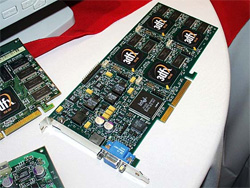 |
